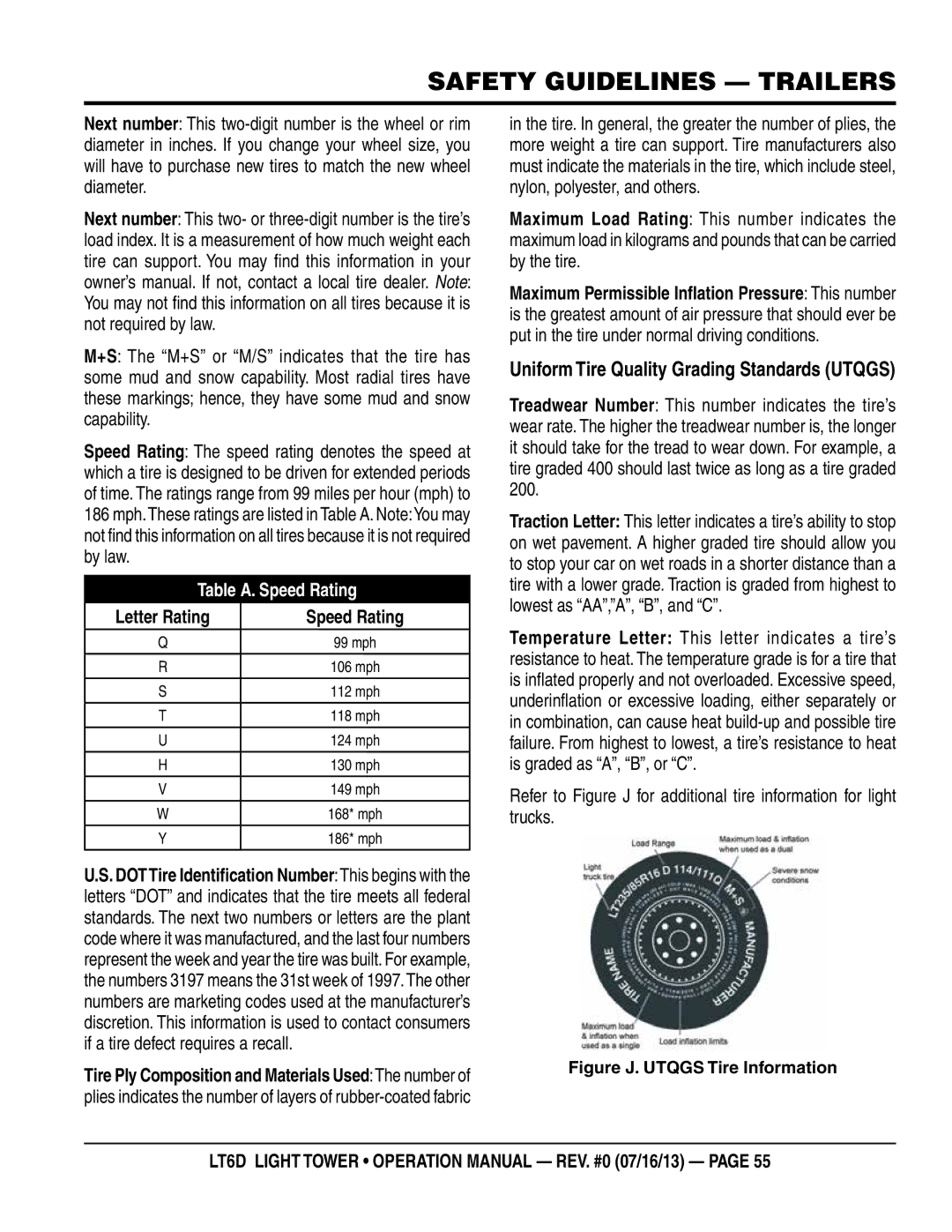
SAFETY GUIDELINES — TRAILERS
next number: This
next number: This two- or
m+s: The “M+S” or “M/S” indicates that the tire has some mud and snow capability. Most radial tires have these markings; hence, they have some mud and snow capability.
Speed Rating: The speed rating denotes the speed at which a tire is designed to be driven for extended periods of time. The ratings range from 99 miles per hour (mph) to 186 mph.These ratings are listed in Table A. Note:You may not fi nd this information on all tires because it is not required by law.
Table a. Speed Rating
Letter Rating | Speed Rating |
Q | 99 mph |
|
|
R | 106 mph |
|
|
S | 112 mph |
|
|
T | 118 mph |
|
|
U | 124 mph |
|
|
H | 130 mph |
|
|
V | 149 mph |
|
|
W | 168* mph |
|
|
Y | 186* mph |
|
|
u.s. DOTTire Identification number:This begins with the letters “DOT” and indicates that the tire meets all federal standards. The next two numbers or letters are the plant code where it was manufactured, and the last four numbers represent the week and year the tire was built. For example, the numbers 3197 means the 31st week of 1997.The other numbers are marketing codes used at the manufacturer’s discretion. This information is used to contact consumers if a tire defect requires a recall.
Tire ply Composition and materials used:The number of plies indicates the number of layers of
in the tire. In general, the greater the number of plies, the more weight a tire can support. Tire manufacturers also must indicate the materials in the tire, which include steel, nylon, polyester, and others.
maximum Load Rating: This number indicates the maximum load in kilograms and pounds that can be carried by the tire.
maximum permissible Inflation pressure: This number is the greatest amount of air pressure that should ever be put in the tire under normal driving conditions.
uniform Tire Quality grading standards (uTQgs)
Treadwear number: This number indicates the tire’s wear rate. The higher the treadwear number is, the longer it should take for the tread to wear down. For example, a tire graded 400 should last twice as long as a tire graded 200.
Traction Letter: This letter indicates a tire’s ability to stop on wet pavement. A higher graded tire should allow you to stop your car on wet roads in a shorter distance than a tire with a lower grade. Traction is graded from highest to lowest as “AA”,”A”, “B”, and “C”.
Temperature Letter: This letter indicates a tire’s resistance to heat. The temperature grade is for a tire that is infl ated properly and not overloaded. Excessive speed, underinfl ation or excessive loading, either separately or in combination, can cause heat
Refer to Figure J for additional tire information for light trucks.
Figure J. UTQGS Tire Information
LT6D LIGHT TOWER • operation manual — rev. #0 (07/16/13) — page 55
